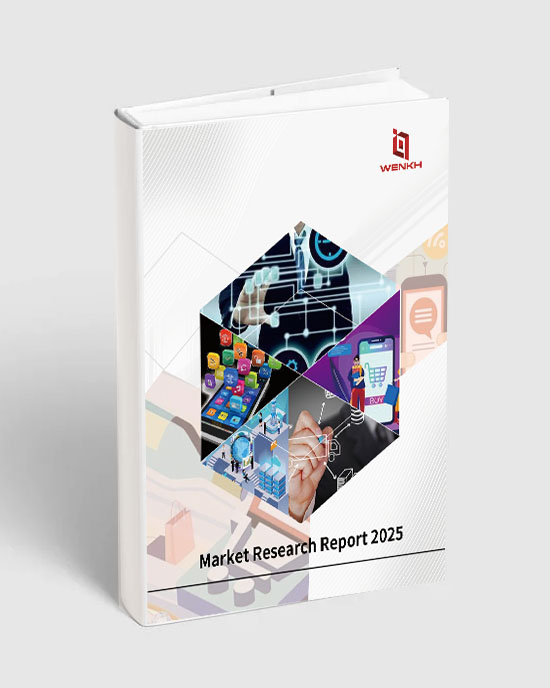
Global Notification Infrastructure Software Market Competitors, Segment Types and Downstream Applications Research Report 2025



Research Summary
Notification Infrastructure Software is a system that enables businesses or organizations to send, manage, and track notifications across various communication channels, such as email, SMS, push notifications, and in-app messages. This software typically provides tools for automating and personalizing messages, as well as ensuring timely delivery to end-users. It is commonly used for customer engagement, system alerts, reminders, and transactional messages, offering features like message scheduling, targeting based on user behavior or demographics, and analytics for tracking the effectiveness of notifications. Notification infrastructure software is critical for maintaining communication with users, improving user experience, and enhancing operational efficiency in industries ranging from e-commerce to finance to healthcare.
The global Notification Infrastructure Software market is highly competitive, with key market players including Twilio, Klaviyo, Amazon, Braze, Courier, CleverTap, Omnisend, Brevo, MoEngage, Intercom, Airship, OneSignal, SuprSend, Fyno, Nashpush, MagicBell, Catapush, Unomok, Engagespot, Knock, Novu, NotificationAPI, etc. This report categorizes the competitive landscape of the global Notification Infrastructure Software market into three tiers based on annual revenue, with the top three market players holding approximately % of the total market share.
This report provides an in-depth analysis of the global Notification Infrastructure Software market, including market size, price trends, market status and future development prospects. It particularly focuses on the market share, product characteristics, pricing, sales revenue, and gross profit margin of major players in the global Notification Infrastructure Software industry. Additionally, this report provides an in-depth analysis of the market status and future development trends of different product segments of Notification Infrastructure Software and their downstream application fields.
In terms of data, this report includes a comprehensive time-series dataset. The historical data spans from 2020 to 2024, providing a solid foundation for analyzing past market trends. The year 2025 is used as a base year to accurately assess the current market landscape. Forecast data covers the period from 2026 to 2032, utilizing scientific analysis methods and models to offer forward-looking predictions and insights into the market's future development. This provides valuable reference information for industry participants and stakeholders.
The report covers countries including United States, China, Germany, Japan, France, South Korea, United Kingdom, India, Italy, Brazil, Mexico, Indonesia, Vietnam and South Africa. It particularly focuses on the sales revenue of Notification Infrastructure Software in these countries, as well as the product segmentation and downstream application market size of each country. The report provides an in-depth analysis of the regional distribution and future development trends of the Notification Infrastructure Software market. By considering local policies, this report evaluates the market prospects of Notification Infrastructure Software in each country, aiming to help companies gain a comprehensive understanding of the industry characteristics and development potential in different regions, optimize regional business layout, and develop precise market strategies to achieve global development goals.
This report places a strong emphasis on data quality and reliability, utilizing diverse and extensive data sources to ensure the accuracy and validity of the information presented. Primary data collection involves multiple channels, including in-depth interviews with senior executives, industry experts, supply chain stakeholders, and end consumers. These interviews provide key insights into corporate strategic planning, industry policy interpretation, supply chain dynamics, and end-user experiences. Secondary data sources cover a wide range of authoritative statistics from government agencies, customs databases, industry associations, third-party paid databases, brokerage research reports, academic research findings, corporate annual reports, financial statements, real-time news updates, and relevant information from international organizations. These data sources serve as a solid foundation for verification and analysis.
Companies Covered
Twilio
Klaviyo
Amazon
Braze
Courier
CleverTap
Omnisend
Brevo
MoEngage
Intercom
Airship
OneSignal
SuprSend
Fyno
Nashpush
MagicBell
Catapush
Unomok
Engagespot
Knock
Novu
NotificationAPI
Product Segment
Platform Standard Service
Customized Service
Product Application
Large Enterprises
SMEs
Chapter Scope
Chapter 1: Product Statistical Scope, Product Segmentation Types and Downstream Applications, Overall Market Size, Current Status and Development Prospects
Chapter 2: Global Notification Infrastructure Software Industry Chain Analysis
Chapter 3: Global Notification Infrastructure Software Industry Environment Analysis and Porter's Five Forces Analysis
Chapter 4: Analysis of the Competitive Landscape of Major Companies in the Global Notification Infrastructure Software Market (Market Share, Product Revenue Comparison, Tier Division, Corporate Expansion and M&A Trends)
Chapter 5: Analysis of Global Major Companies (Company Profiles, Product Specifications and Features, Product Revenue and Product Gross Profit Margin)
Chapter 6: Global Notification Infrastructure Software Market Analysis by Countries, Product Segment and Downstream Application
Chapter 7: United States Notification Infrastructure Software Market Size, Product Segment, Downstream Application Analysis
Chapter 8: China Notification Infrastructure Software Market Size, Product Segment, Downstream Application Analysis
Chapter 9: Germany Notification Infrastructure Software Market Size, Product Segment, Downstream Application Analysis
Chapter 10: Japan Notification Infrastructure Software Market Size, Product Segment, Downstream Application Analysis
Chapter 11: France Notification Infrastructure Software Market Size, Product Segment, Downstream Application Analysis
Chapter 12: South Korea Notification Infrastructure Software Market Size, Product Segment, Downstream Application Analysis
Chapter 13: United Kingdom Notification Infrastructure Software Market Size, Product Segment, Downstream Application Analysis
Chapter 14: India Notification Infrastructure Software Market Size, Product Segment, Downstream Application Analysis
Chapter 15: Italy Notification Infrastructure Software Market Size, Product Segment, Downstream Application Analysis
Chapter 16: Brazil Notification Infrastructure Software Market Size, Product Segment, Downstream Application Analysis
Chapter 17: Mexico Notification Infrastructure Software Market Size, Product Segment, Downstream Application Analysis
Chapter 18: Indonesia Notification Infrastructure Software Market Size, Product Segment, Downstream Application Analysis
Chapter 19: Vietnam Notification Infrastructure Software Market Size, Product Segment, Downstream Application Analysis
Chapter 20: South Africa Notification Infrastructure Software Market Size, Product Segment, Downstream Application Analysis
Chapter 21: Research Conclusion
Chapter 22: Methodology and Data Source
Purpose and Value of the Report
Market Trend Insights: Analyze industry trends, market dynamics, and future growth potential to help companies forecast changes and develop strategic plans.
Competitive Landscape Analysis: Understand key players' revenue segmentation, strategies, market share, and business models to guide competitive decisions.
Investment Decision Support: Provide feasibility analysis through market size, growth rate, demand trends, and potential risks for informed investment decisions.
Target Customer and Demand Analysis: Examine consumer behavior, purchasing preferences, and pain points to optimize products and improve market penetration.
Policy and Regulatory Insights: Interpret relevant industry policies to ensure compliance and mitigate regulatory risks.
Business Model Optimization: Offer data-driven suggestions for enhancing business models and improving profitability.





